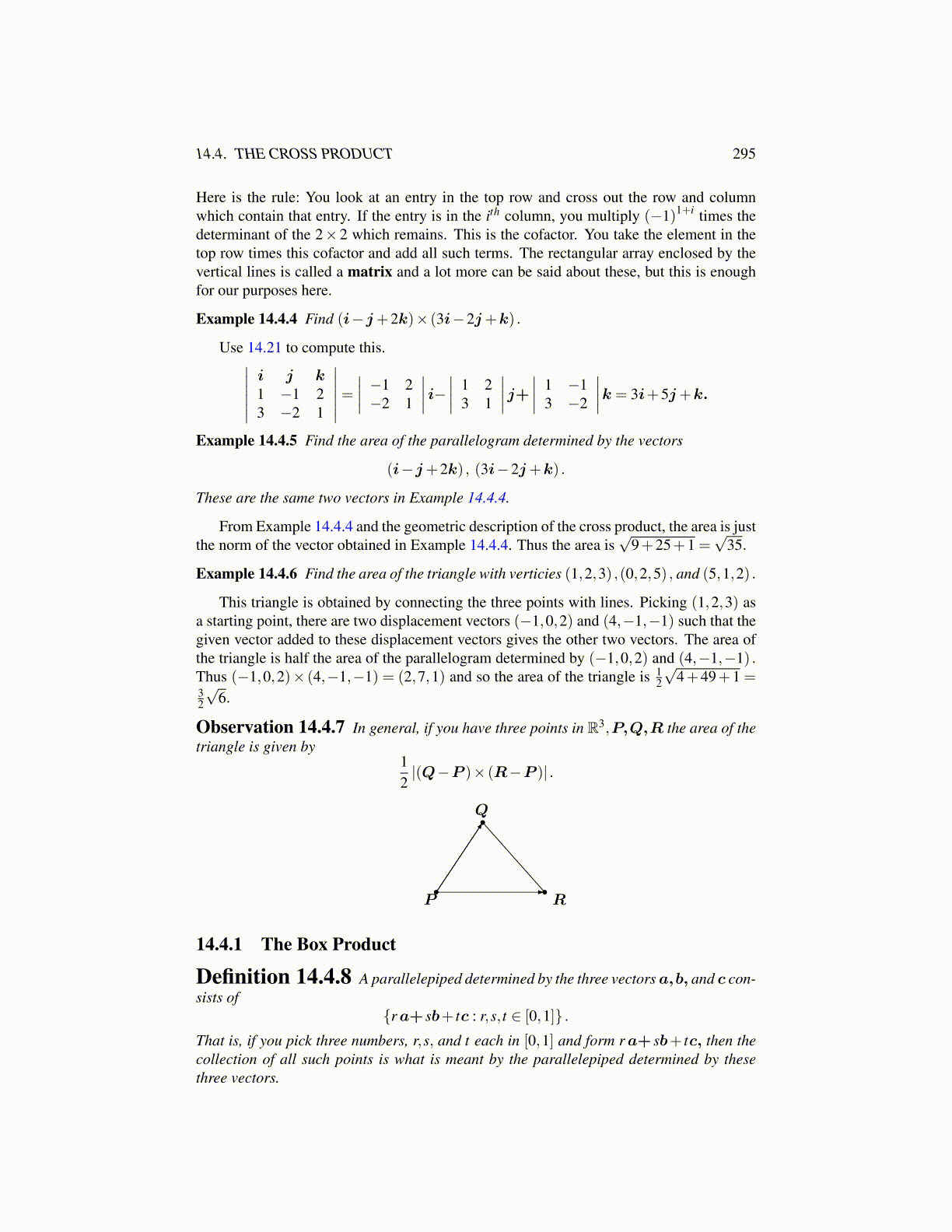
14.4. THE CROSS PRODUCT 295
and ∣∣∣∣∣∣a b cx y zu v w
∣∣∣∣∣∣= a∣∣∣∣ y z
v w
∣∣∣∣−b∣∣∣∣ x z
u w
∣∣∣∣+ c∣∣∣∣ x y
u v
∣∣∣∣ .Here is the rule: You look at an entry in the top row and cross out the row and columnwhich contain that entry. If the entry is in the ith column, you multiply (−1)1+i times thedeterminant of the 2× 2 which remains. This is the cofactor. You take the element in thetop row times this cofactor and add all such terms. The rectangular array enclosed by thevertical lines is called a matrix and a lot more can be said about these, but this is enoughfor our purposes here.
Example 14.4.4 Find (i−j+2k)× (3i−2j+k) .
Use 14.21 to compute this.∣∣∣∣∣∣i j k1 −1 23 −2 1
∣∣∣∣∣∣=∣∣∣∣ −1 2−2 1
∣∣∣∣ i− ∣∣∣∣ 1 23 1
∣∣∣∣j+ ∣∣∣∣ 1 −13 −2
∣∣∣∣k = 3i+5j+k.
Example 14.4.5 Find the area of the parallelogram determined by the vectors
(i−j+2k) , (3i−2j+k) .
These are the same two vectors in Example 14.4.4.
From Example 14.4.4 and the geometric description of the cross product, the area is justthe norm of the vector obtained in Example 14.4.4. Thus the area is
√9+25+1 =
√35.
Example 14.4.6 Find the area of the triangle with verticies (1,2,3) ,(0,2,5) , and (5,1,2) .
This triangle is obtained by connecting the three points with lines. Picking (1,2,3) asa starting point, there are two displacement vectors (−1,0,2) and (4,−1,−1) such that thegiven vector added to these displacement vectors gives the other two vectors. The area ofthe triangle is half the area of the parallelogram determined by (−1,0,2) and (4,−1,−1) .Thus (−1,0,2)× (4,−1,−1) = (2,7,1) and so the area of the triangle is 1
2
√4+49+1 =
32
√6.
Observation 14.4.7 In general, if you have three points in R3,P,Q,R the area of thetriangle is given by
12|(Q−P )× (R−P )| .
P
Q
R